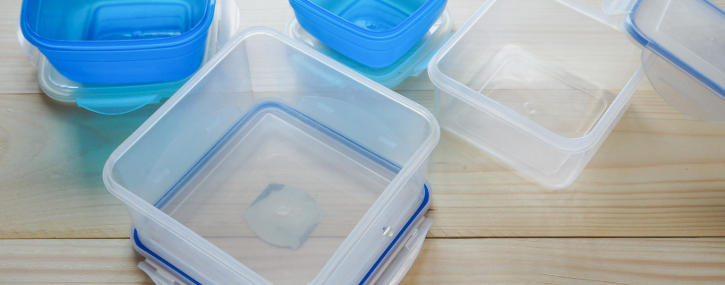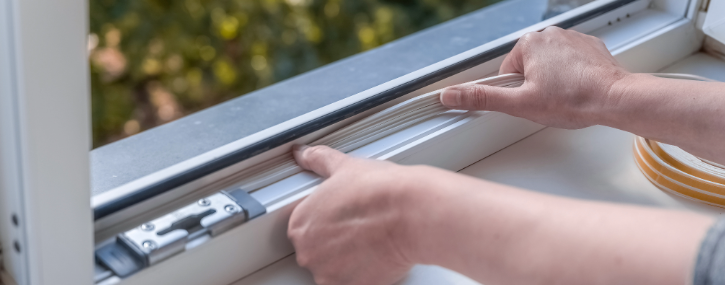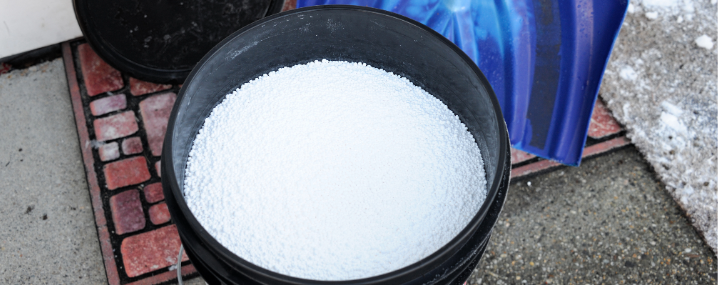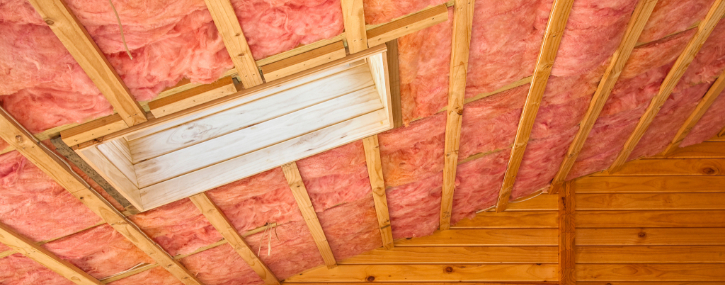7 First Time Homebuyer Mistakes You Can Avoid

Written by Lilly Woodard
To err is human. The homebuying process is exciting, but it can also be overwhelming and confusing. However, learning about common mistakes first-time homebuyers make can help you avoid them in your journey to homeownership. Knowing these common mistakes and working to not repeat them will make your process much more enjoyable.
Take a look at some of the most common (and frustrating) first time homebuyer mistakes you don’t have to make:

1. Shopping for homes before you know how much you can afford.
Once you make the decision to buy your first home, browsing properties is probably the most exciting step of the home buying process – way more fun than figuring out those dreaded finances. However, you could end up wasting a lot of time looking at or visiting homes you can’t afford.
Instead, begin the home buying process by meeting with a mortgage lender and getting pre-approved so you know what budget you have. That way, when you start looking at houses, you’ll already have that peace of mind knowing you’re within your budget. Plus, when your dream home comes on the market, you will be ready to act!
2. Not finding the right loan for you.
A lot of first time homebuyers want or need to make smaller down payments. There are a number of loan programs available that allow you to do exactly that. Make sure to familiarize yourself with all first-time homebuyer programs, as well as loan programs such as VA Loans, USDA Loans, and FHA Loans. Find out more about the different types of loans that are available to you here!
Ready to compare financing plans? Explore mortgage loan options »
3. Writing off homes that have lingered on the market.
Sometimes, homes get passed over because they’ve been sitting on the market for a little longer than usual. Some homes may linger on the market longer than others due to their condition or similar reasons. However, a home may be on the market for a while because of very normal circumstances: being listed too high originally, not being marketed correctly, or needing some minor renovations.
If the house looks right to you, then don’t dismiss the option just because it has been on the market for a long time. It never hurts to have a showing for the house! It may end up being perfect for you.

4. Making “the wrong” down payment for you.
While you are most likely aware that the 20% down payment is not always necessary, putting down too little money can also be a mistake. The 20% down payment allows you to avoid mortgage insurance, but it can still be a significant amount, and you don’t want to deplete your savings. According to the National Association of Realtors, in 2024, the average down payment was only 9% for first-time homebuyers.
Make sure to review both numbers and determine what you’re comfortable with before making a commitment.
Need help covering your down payment? Explore assistance programs »
5. Opening a New Line of Credit or Making a Major Purchase Before Your Home Sale Is Final.
One of the most crucial periods in the home buying process is the time between applying for your mortgage and closing on your home. During this time, you want to leave your credit alone as much as possible. The lender will base the decision on your loan on your debt-to-income ratio and credit score. This means that applying for a car loan, credit card, or making a large purchase on credit can jeopardize your chance of getting a loan.

6. Being Impractical.
Buying your house should be an exciting time, but this is an important, financial decision. Don’t take it personally or get discouraged if your offer gets rejected. Many people can get carried away looking for their “unicorn” home that checks every single box. Perfection can be hard to find, so be sure to determine what you can compromise on to get as close as possible to your dream home. The probability of finding a home that fulfills every item on your wish list while remaining on budget is actually pretty low. Know what your priorities are and be willing to negotiate.
Get personalized guidance—connect with an agent »
7. Waiving home inspections.
It’s super exhilarating to be almost closed on your home, but don’t rush the process and waive the home inspection. The home inspection helps find things that you don’t see as easily during a normal walkthrough: mold, foundation damage, rotted wood, heating problems, and other significant and costly issues. The worst would be to close on your home, only to find out you missed some problems that a home inspector could’ve caught for you.
The most important thing to remember is that buying your first home is a learning process, and mistakes are inevitable. Educating yourself on the process and working with professionals you trust is key. If this seems like a lot to take on, just remember that every homeowner has gone through the same process (some of them without the help of the internet). You’ve got this!
Sources:
- https://www.bankrate.com/mortgages/first-time-homebuyer-mistakes/#common-mistakes
- https://www.advantageccs.org/blog/5-big-mistakes-to-avoid-as-a-first-time-home-buyer/
- https://www.rocketmortgage.com/learn/first-time-home-buyer-mistakes
- https://www.zillow.com/learn/first-time-home-buyer-mistakes/
- https://www.nar.realtor/newsroom/first-time-home-buyers-shrink-to-historic-low-of-24-as-buyer-age-hits-record-high
Veteran Homeownership: From Service to Settlement

When it comes to making a move, it’s safe to say you know a thing or two. You probably saw your fair share of moving during your military days, and now, as a veteran, you might be thinking of settling down. But whether it’s your first move or your final move, knowing where to begin can still be overwhelming. The good news is: thanks to your service, there are a number of homeownership benefits available to you.

Your Final PCS: The “Home of Selection”
When retiring from active duty, you’re entitled to one final Permanent Change of Station (PCS) move, commonly referred to as your “Home of Selection” (HOS) move. This benefit allows you to relocate to any location within the United States at the government’s expense.
As of the latest guidelines, you have up to six months from your official retirement date to complete this move. However, under certain circumstances, you may request extensions. Extensions can be granted on a case-by-case basis.
To ensure a smooth transition, it’s advisable to plan your move well in advance and consult with your local Transportation Office (TMO) or Personal Property Office (PPO) for guidance on the process and required documentation.

Military Rewards Programs & Relocation Assistance
Our dedicated relocation team is here to support veterans and their families throughout the home buying or selling journey. They assist in connecting eligible clients with available military rewards programs that may offer cash-back benefits ranging from $500 to $5,000 when buying or selling a home.
These programs are designed to recognize your service and help ease the financial transition of a move. Let us help match you with the benefits you may qualify for—and guide you through each step of the process with care and expertise.

VA Loan Benefits in 2025
One of the most significant homeownership tools for veterans is the VA Home Loan, backed by the U.S. Department of Veterans Affairs (VA). As of 2025, this program continues to offer several unique benefits:
- 0% down payment required (in most cases)
- No private mortgage insurance (PMI)
- Competitive interest rates
- Limited closing costs
- More flexible credit and income requirements
VA loans are available to eligible veterans, active-duty service members, certain National Guard and Reserve members, and qualifying surviving spouses. According to the VA, over 1 million loans were guaranteed in 2023 alone, highlighting their continued popularity and accessibility.
For full eligibility requirements and updated guidelines, visit the VA Home Loans official site.
Tips for Getting Started
If you’re thinking about buying or selling a home, here are a few first steps:
- Connect with a real estate agent who understands military-specific programs and benefits.
- Gather your documentation, including your Certificate of Eligibility (COE), which proves your eligibility for a VA loan.
Homeownership is a big milestone—and as a veteran, you’ve earned the right to explore it with support and confidence. Whether you’re retiring locally or relocating across the country, there are trusted resources and people ready to help you navigate your journey.
Top 5 Home Features Homebuyers Want Most

These days, home improvement ideas are everywhere—magazines, Pinterest boards, TV shows, and even entire networks are dedicated to upgrading and designing the perfect home. When preparing to sell, it can be overwhelming to navigate these endless options. So, what do buyers really want?
Keep in mind that most remodeling efforts only increase home values by 50% to 80% of the average project’s costs, according to Remodeling magazine’s 2020 Cost vs. Value report. To get the most bang for your buck, sellers should focus on features that homebuyers most want to see. While this is not a complete list, here are the items topping most homebuyers’ wishlists.
Energy Efficiency
First-time homebuyers are particularly drawn to energy-efficient features that will reduce utility bills. These savings can vary depending on how many energy-efficient appliances a home has. For instance, Energy Star-rated windows can reduce heating and cooling costs by 12%, and Energy Star-certified washing machines can adjust water usage based on the laundry’s soil level.

Hardwood Floors
Hardwood floors are more than just a vanity feature—they’re durable, long-lasting, and versatile enough to complement any room layout. According to recent surveys, 83% of homebuyers desire hardwood floors. If you have carpet and don’t want to break the bank upgrading, consider lower-cost alternatives like bamboo, vinyl, or cork.

Modern Kitchens
Kitchen upgrades can bring the most return for a seller. Homebuyers highly value features like new appliances, granite countertops, and ample storage. According to Clayton Homes, buyers are willing to pay up to 40% more for an eat-in kitchen.

Laundry Rooms
A dedicated laundry room is now seen as essential, with over 90% of homebuyers considering it a must-have. The easiest place to add a laundry room is usually the basement, and this upgrade can cost as little as $1,000. However, most buyers prefer a laundry room on the main floor.

Outdoor Spaces
A desirable outdoor area is one of a homebuyer’s most coveted features. Adding or upgrading a patio can increase your home’s value and provide a return on investment of 66% to 102%. Outdoor spaces are more important than ever, offering a place to relax and entertain.
Sources
National Association of Realtors (NAR)
Winter Is Coming: How to Stay Warm




4. Seal Up Drafts
Even the smallest drafts can let out a surprising amount of heat. Check for gaps under doors, around windows, or even through your mail slot. Use weather stripping, rubber slats, or a DIY draft stopper to keep the cold air out and the warm air in. Don’t forget to close your fireplace flue when it’s not in use—otherwise, it’s like leaving a window wide open!
5. Close Unused Rooms
If you have rooms that don’t get much use, like guest bedrooms or a home office, close the doors to keep heat concentrated in the spaces you use most. It’s an easy way to save on energy costs and stay warmer.
6. Check Your Filters
Dirty HVAC filters can block airflow and make your heating system work harder than it needs to. Check your filters monthly and replace them if they’re dirty. A clean filter not only keeps your home warmer but also improves air quality.
7. Insulate for Long-Term Comfort
Did you know a significant portion of your home’s heat loss occurs through the walls and roof? Adding insulation to your attic, walls, and even crawl spaces can make a big difference. Not sure if you need it? If snow melts quickly on your roof, it’s a sign heat is escaping and extra insulation could help.
Stay Warm and Cozy This Winter!
5 Best Ways to Prevent Thanksgiving Disasters

Tips for how to host a safe Thanksgiving
Written by Lilly Woodard
Thanksgiving is a really important part of the year. For many people, it’s a time to gather with friends and family, gorge themselves on amazing homemade food, and take lots and lots of naps. For others, it’s a time to prepare for the busiest retail shopping day of the year, Black Friday. But for a very, very unlucky few, Thanksgiving is a time of ruined dinners and fiery disasters. Luckily, we have some tips to help you avoid any disasters that would surely ruin your Thanksgiving.
1. Be aware of the possibilities of fires and how to prevent them
There are a ton of ways to prepare for cooking a Thanksgiving meal, and there’s so much to keep track of. Especially if you’re cooking the entire meal, your kitchen is probably crazy, and a lot is going on! Move things that can burn, like towels, bags, and ingredients. Keep your sleeves rolled up so they’re out of the way and are less likely to catch fire.
Keep an eye on what you’re cooking. Don’t leave your food unattended, watch for smoke and boiling grease, and make sure no little hands are trying to “help.” Keeping a diligent eye on things reduces the chance of chaos.
But what if something does catch fire? It’s easier said than done, but don’t panic! If it’s in the oven, leave the oven door closed and turn off the oven until it cools. Make sure you know where your fire extinguisher is ahead of time, and have an evacuation plan if things get out of hand.

2. Properly thaw your turkey before cooking
Many people wait until the last moment to thaw their turkey. But not you! The CDC advises that it takes 24 hours per pound to thaw a turkey properly. The safest way to defrost your turkey is in the fridge. You can also use a leak-proof bag in a sink full of cold water, provided you change the water every thirty minutes.
By not thawing your turkey properly or by not cooking the turkey completely, bacteria can spread, and you and your guests could get sick. Not a great way to spend the holidays!
3. Lessen the chance of guest injuries
Burning your tongue on macaroni is not the only injury to worry about. If you have a lot of people coming over, there are more chances for accidental injuries just due to the size of your group. Be smart, and prepare against injuries as much as you can.
If you have kids attending, make sure to childproof your home. Put away any extra cords or items people could trip over and check that all walkways are clear. Loose rugs, frosty walkways, and chairs with a mind of their own…it never hurts to double-check and prepare!
If someone does get hurt, ensure that you know where your first-aid kit is. If it’s a bigger injury, check what your home insurance covers regarding injuries.

4. Be mindful of pets
We all love our pets, but things can get chaotic around the holidays. People are coming in and going out of the house, and this can get your pet confused, excited, or anxious. We don’t want them escaping out a door that was left open or nipping at someone because they’re too excited. Keeping them sequestered away from the party may be a smart alternative, keeping both your pets and your guests safe.
Additionally, if you want to include your pet in the festivities after the party, here’s a quick list of foods to avoid sharing:
- Dinner rolls
- Stuffing
- Pumpkin pie
- Pecan pie
Instead, your animals would be delighted to have some boneless turkey, green beans, broccoli, or mashed potatoes!

5. Streamline the clean-up process
It may be nice to have your guests offer to help you clean up, but make sure it’s done wisely. Scoop discarded food into the trash can instead of the garbage disposal and don’t pour excess grease down the sink. Aim to be on the same page with guests about dishes. Is there a drop zone for dirty dishes? Are you a hand-washer or a dishwasher user? Be on the same page with your helpers to make the end of the meal as stress-free as possible.
Things may get a little messy, and that’s okay. Thanksgiving is about spending time with the people you love and being thankful for what you have…but it doesn’t hurt to prepare in advance to make the day go as smoothly as possible.
https://nutri-vet.com/blogs/news/thanksgiving-food-for-dogs
https://www.kin.com/blog/thanksgiving-safety-tips/
https://extramile.thehartford.com/home/prevent-thanksgiving-disasters/
https://www.fema.gov/blog/10-ways-prevent-home-fires-thanksgiving
7 Ways To Get Your Kitchen Ready For Thanksgiving

Thanksgiving is upon us! And, if you aren’t quite ready to host your family and friends for a Thanksgiving feast, we are here to help! To help prevent a Turkey Day disaster, follow these tips to prepare your kitchen ahead of time.
Make Room for Leftovers
It is finally time to go through the refrigerator and throw away that container of pasta you forgot about from last month. A big meal generally means lots of leftovers, so it is good practice to make sure you have room in your refrigerator to store leftovers. Nothing is more frustrating than trying to shove containers of food into an already stuffed fridge. Taking time to clean out and organize your fridge beforehand will make your life much easier on Thanksgiving Day.

Be Prepared to Send Leftovers with Guests
In addition to making room in your fridge, it is equally important to be stocked up on tupperware containers, aluminum foil, plastic wrap and zip-lock bags so you can send leftovers home with your guests.

Prep Your Utensils and Tools
Whether your guest list is small or large, be sure you have enough plates and utensils for everyone attending. If you are using plates and silverware that are used for special occasions, be sure to clean and/or polish them prior to guests arriving. In addition, be sure that your kitchen knives are sharp and ready for carving the turkey, and that you have all of the serving utensils you need for your meal.
Make a Meal Game Plan
When preparing a large meal, it is important to have a game plan beforehand so you can cook accordingly. Make a list of all of the dishes you will be making and what ingredients you need to purchase from the store. Make any dishes that can be made ahead of time to reduce the amount of work on Thanksgiving Day. Alternatively, if your Thanksgiving dinner is more of a potluck-style meal, be sure to know who is bringing what dish to reduce the chance of duplicates.
Thaw the Turkey
Everyone looks forward to eating turkey on Thanksgiving, but they don’t necessarily look forward to cooking it. Thawing your turkey takes a surprisingly long time, so be sure you aren’t caught holding up dinner because your turkey is still half frozen. If you plan to put the turkey in cold water to thaw (never use hot water!), it can take around 30 minutes for each pound. If you plan on thawing it by placing the frozen turkey in the refrigerator, plan on one day per five pounds.

Appliance Prep
Having guests over for Thanksgiving always results in a ton of dishes that need to be washed. To avoid having to hand wash all of the dishes or having to leave them in the sink, be sure your dishwasher is empty and ready to load. It is also a good idea to use the self-cleaning function on your oven prior to Thanksgiving to make sure it is clean; having a clean oven results in your food cooking more evenly.
Clear Your Countertops
Before you start preparing your favorite dishes, it can be helpful to clear off your countertops so you can take advantage of as much space as possible. Put the toaster in the pantry, throw away those old grocery receipts that are piling up in the corner and finally put away the dishes you have had “air drying” for the past three days. Now you have room to prep your favorite dishes without feeling like you have no space.
Can Your Home Insurance Protect You from Halloween Tricks and Treats?

When Halloween Turns into Your Very Own Horror Movie
Spooky season is upon us! Soon, the streets will be littered with goblins, ghosts, and Superman(s). As they say, it’s all fun and games…until Aladdin knocks over your jack-o-lantern and sets your front porch on fire.
So, what happens if this Halloween brings you and your home more tricks than treats? Luckily, some homeowners’ insurance policies cover several of the most common Halloween horrors!
Check out 5 Halloween nightmares that could be covered by your home insurance policy and how to prepare against these instances in advance. While you’re reading, remember not all policies are created equally! Always be sure to check yours before filing a claim.

Candles or Holiday Lights Catch Fire
When the string lights and candles you used to create a spooky ambiance accidentally set the place on fire, you may be covered unless the fire resulted from negligence.
How to prepare: Refrain from using candles in your pumpkins or as decorations. Use battery-operated lights if possible. If you use candles in your jack-o-lanterns or as decorations, ensure they are displayed in a safe space away from foot traffic, leaves, and grass.
A Trick-or-Treater Gets Hurt on Your Property
Did the Little Mermaid take a tumble in your driveway? Most likely, you’re covered. However, it is important to make sure that walkways are paths are clear of hazards on Beggar’s night. Remember that most policies will only cover accidental injury. If your little princess eats too much candy and kicks the astronaut next door, you may still be held liable.
How to prepare: Check your property. Check for items sticking out of the ground, holes in your yard, cracks in pavement, cords, and low-hanging tree limbs. If you’re using extension cords for decorations, make sure they’re out of the way so no one trips.
Your Pup Bites a Neighbor or Trick-Or-Treater
Even the best-behaved dogs can get over-excited or frightened on Halloween. All these guests showing up at your door, often dressed in flashy costumes? Your dog’s first instinct may be to protect or to play. Luckily dog bites are often covered by your policy, but there may be restrictions based on your insurer or location.
How to prepare: Keep your pet inside and in a room away from the entryway.
Pranksters Vandalize Your Home
Most policies will cover vandalism in the form of Halloween mischief when the cost of the repair exceeds a certain amount, given the home is currently being resided in.
How to prepare: Keep your porch lights on, park your car in the garage, install motion-sensor cameras/lights, and sit outside during Trick-or-Treat. These preparations can also deter thefts.

Treats Given Out is an Allergen
Although your homeowner’s insurance can cover a wide variety of incidents that take place on your property, food-related ones may not be covered. You could be liable for allergic reactions if you give out homemade treats. Stay away from homemade treats because if something happens, you can show the candy you bought and not be held liable as an individual.
How to prepare: Stick to store-bought candy and check the labels for ingredients if you want to stay away from big allergens like peanuts.
We hope this Halloween brings you and your family nothing but festive fun, but should you find yourself in need of some insurance expertise, we can help! Consult carefully with your policy or check out our partnered insurance company, HHS Insurance Company, for more information: https://hhs-insurance.com/home-insurance.

Sources:
Universal Property – Avoid Halloween Home Insurance Claims with These Tricks
Realtor.com – Are Homeowners Liable for Injury to Trick-or-Treaters?
9 Important Home Projects to Tackle This Fall

As the leaves start to change and temperatures begin to cool, fall is the perfect time to tackle some essential home maintenance projects. Preparing your home for the colder months can help you avoid costly repairs and ensure your home stays warm, safe, and comfortable throughout the winter. Whether you’re looking to improve energy efficiency, protect your property, or simply enhance its curb appeal, here are some key projects to focus on this season:

1. Clean and Inspect Gutters
Gutters are crucial for directing water away from your home, but they can easily become clogged with leaves and debris during fall. Clogged gutters can lead to water damage, roof issues, and even flooding. Clean your gutters and downspouts thoroughly, and consider installing gutter guards to prevent future blockages. Clear any debris from the roof as well, to keep it from clogging gutters during the next storm.
Safety Tips:
- Use a sturdy ladder, and have someone stabilize it for you.
- Wear gloves and eye protection to guard against debris and contaminated water.
- Consider hiring a professional if you’re uncomfortable with heights or the task.
2. Roof Maintenance and Repairs
Your roof is your home’s first line of defense against harsh winter weather. Inspect it for any missing, curling, or damaged shingles, and replace them as needed. Check for signs of leaks or damage and repair them before they become more significant issues. Regular roof maintenance can prolong the life of your roof and help you avoid costly repairs later on.
3. Prepare Home Heating and Air Systems
With the heating season approaching, it’s essential to ensure your furnace is in good working condition. If your furnace is over 10-15 years old or takes longer to kick on than usual, it might be time for a replacement. Look for efficient models with a high SEER (Seasonal Energy Efficiency Ratio) rating. Additionally, clean and cover outdoor air conditioning units to protect them from the elements, unless you have a heat pump that requires year-round exposure.

4. Window and Door Insulation
Drafty windows and doors can significantly impact your energy bills during winter. Check the sealant and caulking around windows and doors, and replace any weatherstripping that shows signs of wear. If your windows are single-pane or show signs of condensation, consider upgrading to double-pane windows for better insulation and comfort.
5. Check and Replace Insulation
Inspect the insulation in your attic and basement. Adding insulation can help keep your home warm and reduce heating costs. Pay special attention to weatherstripping around doors and windows, and seal any gaps to prevent heat loss. Use foam insulation for any leaks in the attic, but avoid blocking vents, as they help reduce humidity levels in your home.
6. Fireplace and Chimney Maintenance
If you plan on using your fireplace this winter, now is the time to clean and inspect it. Check the chimney for any blockages and ensure that the flue is functioning correctly. For gas or electric fireplaces, an inspection is also recommended. Stock up on firewood or fuel, so you’re ready for cozy winter nights.

7. Exterior Painting and Lawn Care
Fall provides optimal weather for exterior painting, as temperatures are usually above 45 degrees, but not too hot. Touch up the paint on your home’s siding and trim to protect it from the elements. For your lawn, rake leaves, aerate the soil, and fertilize to ensure your grass remains healthy through winter.
8. Winterize Outdoor Faucets and Irrigation Systems
Prevent pipes from freezing by draining and turning off outdoor faucets and irrigation systems. Store hoses away and cover faucets with insulated covers to avoid potential damage during freezing temperatures.

9. Prepare for Snow and Ice
Check your snow removal equipment, such as shovels and snow blowers, to ensure they are in good working order. Stock up on ice melt or sand to keep driveways and walkways safe during icy conditions.
Taking care of these home maintenance tasks in the fall can save you time, money, and stress during the winter months. If you’re planning to sell your home, these updates can also boost your property’s appeal and value.
Sources:
Why Should I use a Realtor?

With online resources at our fingertips, some may wonder, “Why should I use a Realtor when I can search for homes or buyers myself?” While technology has made it easier to browse listings, a Realtor provides invaluable services beyond simply finding properties. Here are some key reasons why using a Realtor is essential:

Knowledge of Market and Access to Resources
Realtors and brokerages pay for access to tools that give you additional insight into the market. Beyond greater access to information, many Realtors have gone through several hours of licensing and post-licensing courses, as well as they are required to complete continuing education courses. A lot of this coursework is surrounded by ensuring that the property is being sold and bought legally, as there are strict requirements throughout the process. Additionally, at Coldwell Banker, agents receive onboarding and regular training to help keep them current on the market, the transaction process and the best tools and resources for both buyers and sellers. This along with experience with buying and selling in your area help to make the process much easier.

Objectiveness and Expertise in negotiation
Buying and selling a home isn’t like picking where you are going for dinner or what you’re going to wear tomorrow – the decision carries a lot of weight, and because of this, negotiations can get personal. An issue that many for-sale-by-owners and buyers that work with for-sale-by-owners come across is with the cost assessment of the property. It’s very common for for-sale-by-owners to overestimate additions and improvements to the house and to think that every improvement adds value to the home. While many do add some value – it often is not the same amount that was initially spent on the repair or improvement. In doing this, many for-sale-by-owner properties stay on the market for longer, and because they often take longer to sell, lose value in the long run. Pricing your house is one of the most important factors for selling your home, and Realtors have the tools and the knowledge to help you get the most accurate cost assessment.

Connections
Since Realtors intermingle with other Realtors, it helps to shorten the time in finding the right buyer for a property, or the right property for a buyer. At Coldwell Banker, agents can add properties to our “Hotlist” before a property is listed, allowing our agents the opportunities to get insight into upcoming properties throughout all our agents before they hit Zillow, Trulia, and Realtor.com. Our Realtors can also notify agents in our office of open houses and price reductions, helping buyers know about relevant open houses in their area and helping sellers get traffic to their open house.
Time and Effort
Real estate transactions involve countless tasks—coordinating showings, open houses, marketing, paperwork, and negotiations. A Realtor manages all of this, saving you time and ensuring nothing is overlooked.
Despite all the value a Realtor provides, you may be surprised to know that Realtors only get paid when they buy or sell your house. How many people do you know that will work this much before being paid? Additionally, many Realtors invest not only their time but also in many cases, invest money out of their own pockets to ensure that a property is being marketed effectively. Given all the benefits and value a realtor provides – instead of asking you may now be asking yourself – why not? Learn more about our Realtors and find the right Realtor for you at https://coldwellbankerishome.com/directory
Why Fall Is A Great Time To Sell

Are you just now thinking of selling your home but are afraid you may have missed your window of opportunity to list this year? Think again! Yes, spring and summer might be the busiest time of the year for the housing market, but there are actually perks to waiting to list your home until the fall. Here are five benefits to listing your home in the fall.

1. Curb Appeal
Listing your home for sale in the fall allows you time to utilize the warmer months to improve on the curb appeal of your home. You can use that time to paint the exterior, fix or add a deck, pave the driveway, install a fence and work on landscaping. Not only will these things make your home look nicer, but it also has the potential to increase the value of your home.
2. Picture Perfect
With clear skies and trees bursting with color, Autumn offers an opportunity for beautiful photos of your home. The atmosphere that comes with fall weather will make your home feel more welcoming and cozy to potential buyers as well. In addition, the weather tends to be more stable, meaning you have less of a chance of rain and excessive heat.

3. Serious Buyers
Because spring is the busy season of real estate, buyers can afford to be picky due to the abundance of inventory. They might hold off on writing an offer and extend their search. But, with the end of spring and summer, buyers will be eager to get settled. No one wants to be moving on cold snowy days, and certainly not during the busy holiday season. With a market where inventory is more limited, buyers will want the process to move quickly. And, as a perk, your home will stand out and not get lost in the pool of houses for sale because there are less options for buyers to pick from.
4. Buyer Demographics
Spring is a wonderful time for families to move and get settled before the school year starts. But, empty nesters and millennials generally start the process later in the year; more than half of buyers don’t have kids under the age of 18 still in the home. In addition, employers who need to relocate employees often wait until the market starts slowing down to avoid higher rates.

5. Realtor Attention
Agents are at their busiest during the spring and summer, and are often working with numerous buyers and sellers at once. If you wait until the market is in it’s off season, your agent will likely be able to give you and your home more attention. When they are busy with endless showings, open houses and other appointments, it might be difficult to ensure you get the time you need or want with your Realtor.

 Facebook
Facebook
 X
X
 Pinterest
Pinterest
 Copy Link
Copy Link






